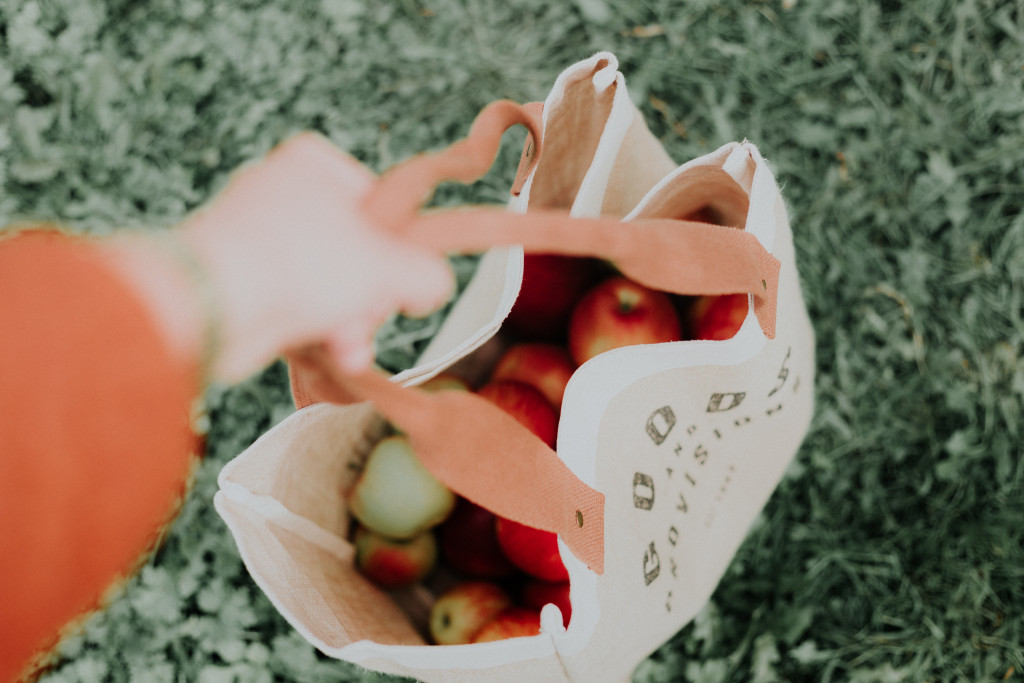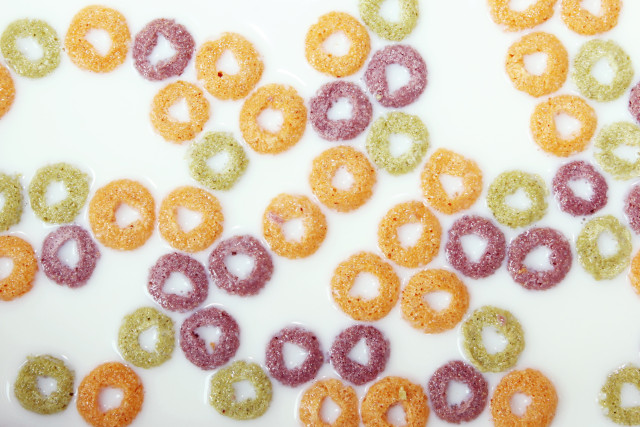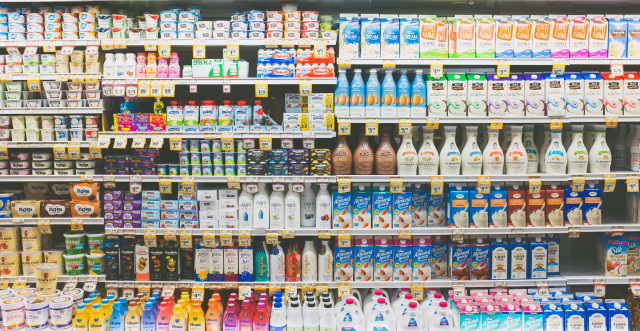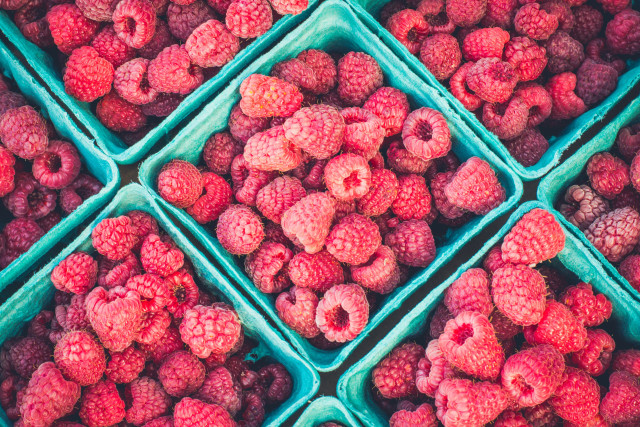
How to Actually Read a Food Label Without Getting Confused
You may be a health-conscious consumer who tries to make nutritious choices, only to learn that you have been duped into believing the nutritional claims that are slapped all over the front of food packages. Many of the foods sold in grocery stores make big promises but it often turns out that they are no more than glorified junk food that spikes your blood sugar and inflammatory markers.
This is especially true as consumer demand for nutritious products continues to increase and companies are investing more heavily in their healthy marketing strategies. After reading this article you may learn that the “clean protein bar” you bought last week may in fact just be a fancy (and more expensive!) candy bar. It doesn't have to be that way! By arming yourself with my key strategies, you can navigate the snack aisle with ease, choosing the foods that truly support your health rather than just claiming to do so. Here are my eight steps to follow:
1-Avoid Front Package Claims As Much As Possible
The first key to reading a food label actually has nothing to do with nutrition itself. What's even better is that it is super simple: disregard the front of the box marketing, which often includes misleading food claims. While some of these claims do have merit -- including labels that have strict standards like USDA Organic, Regenerative Organic Certified and Non-GMO -- front of package marketing claims are typically used to trick you into buying unhealthy products. Statements such as “made with whole grains,” “good source of fiber,” or “made with real fruit!” are often added to the front of a packaged food to hide the fact that one of the first ingredients is corn syrup. These hidden ingredients often account for the ultra-processed foods that make up 60% of calories consumed in America. Look for foods that visually look like real, minimally processed foods as the first step. This is easiest when shopping for vegetables, fruits, nuts, seeds, eggs, fish, meat, and legumes. The more that you shop at local farms and farmers markets, the easier it is to know how the food is grown!
“Gluten-free” and “paleo” front of package labels can be helpful to those with dietary limitations and/or food sensitivities. Paleo labeling means that the product doesn’t contain grains, gluten, legumes, refined oils, dairy and refined sugars (beware it can still have added sugars like raw honey). Just remember, labeling an ultra-processed food “paleo” or “gluten-free” does not automatically mean it’s more nutritious. A paleo or gluten free cookie is still a cookie and likely has a similar impact on your blood glucose. So treat them as desserts!
2-Examine the Ingredient List
The next place to look is the ingredient list (that is of course except when eating a whole food like a vegetable or fruit!). The goal is for you to recognize most of the ingredients listed. This helps to cut back on products that are full of preservatives that you may have never heard of. A good rule of thumb is that if you cannot picture how the item would be made, it’s generally best to avoid. Furthermore, ingredients are listed in descending order by weight, so the first few ingredients will ideally contain nutrient-dense whole foods like nuts, seeds, and other whole foods. If you purchase a food that contains added sugar, it’s best for it to be listed towards the end of the list. After the ingredient list, the product will include a list of any of the eight allergens (milk, egg, fish, shellfish, tree nuts, peanuts, wheat, and soy) included, so you can easily avoid these ingredients if you have food sensitivities, allergies, or adverse reactions.
After the ingredients, we switch gears to the Nutrition Facts panel. As of July 1, 2021 all food companies needed to meet the new Nutrition Facts label requirements. Here is a peak at the difference between the old label to the new label. While it is far from perfect, the changes are definitely a step in the right direction.
3-Start with Serving Size
The Serving Size listed at the top is the suggested single serving size. This information indicates the volume of food that is associated with the rest of the label. It can be easy to eat an entire pint of ice cream or box of crackers in one sitting when you aren’t paying attention. But often there are 4-8 servings per container so make sure you spot this information to add some context to the numbers. Be careful because the serving sizes on the label are often much smaller than what you may typically consume in real life.
In some instances, you may also want to look at calories. But you can often support satiety and fullness, which often leads to more effortless weight loss, by focusing on: choosing high quality ingredients; stabilizing blood sugar levels with a balance of proteins, healthy fats, fiber; ramping up your micronutrients and choosing foods that are naturally colorful. This can help you obsess less over calorie counting.
4-Know Your Fats
Not all fats are bad--it’s the type of fat that matters most. Healthy fats are essential for supporting your blood sugar balance and increasing satiety. Examples include extra virgin olive oil, avocado, olives, nuts and seeds. The label lists the Total Fat, along with Saturated Fat and Trans Fat. Sometimes companies will also list Monounsaturated Fats and Polyunsaturated Fats. Opt for healthy fats, especially monounsaturated fats, in your diet with each meal and snack! In 2015, the Dietary Guidelines for Americans reversed 40 years worth of focus on restricting total fat and removed any limitations for total fat in the diet.
Trans Fats are a type of fat to avoid--aim for 0g per serving. You can get Trans Fats naturally from meats and dairy or industrialized Trans Fats that have historically been found in ultra-processed foods. Research shows the industrialized Trans Fats negatively impact HDL and LDL cholesterol, in addition to increasing levels of inflammation and decreasing insulin sensitivity. Because of the clear association, industrialized Trans Fats were banned from the United States food supply in January 2020 and will be banned worldwide by 2023. But it’s still a good idea to double check that partially hydrogenated oils (Trans Fats) are no where to be found in the ingredient list. They are most commonly found in packaged baked goods or fried snacks.
Saturated fats are solid at room temperature, like butter or coconut oil. You can also find saturated fats in red meat and dairy products. The government recommendation is to aim for less than 20g of saturated fat per day. While it is still hotly debated on whether or not saturated fat on its own contributes to cardiovascular disease, you may want to limit products that are high in saturated fats unless they come from whole food sources like coconut. People who eat a lower carbohydrate diet are thought to be able to incorporate a little more saturated fat without consequences but you always want to monitor your labs closely to ensure your diet is contributing to optimal blood work.
On a separate note: Cholesterol is listed below the Fats. Cholesterol has a bad wrap from years of research that said consuming cholesterol increases your cholesterol. But today's research highlights this is simply not true. Eating cholesterol in your diet does not lead to high cholesterol in your lipids. Rather, scientists have discovered that eating refined grains and added sugar have a larger effect on increasing the body’s cholesterol levels. More on that in the Carbohydrates section!
5-Find Out Your Sodium Needs (Controversial!)
Next on the Nutrition Facts list is sodium, which is a very controversial nutrient and electrolyte. It should be noted that sodium is essential for overall health and helps you absorb nutrients and maintain proper fluid balance. For more than three decades, the universal advice surrounding sodium has been: eat less salt to help lower your blood pressure and live longer. The recommended universal limit is 2,300mg per day, with an “ideal” limit of 1,500mg per day. But there has been a lack of strong, consistent evidence demonstrating that sodium is as harmful as it's made out to be. This is especially true for athletes and active people who lose excessive amounts of sodium in sweat, people who eat a low carbohydrate/low glycemic diet and those who naturally have low blood pressure.
Here is where most experts will agree: it’s essential to eliminate the worst sodium offenders, which include ultra-processed foods and fast foods for optimal health. These food sources of sodium are the most common contributors to health problems and while they are high in sodium, they also are typically high in refined carbohydrates, added sugars and unhealthy fats. Together these create the perfect storm for inflammation and metabolic dysfunction. Since sodium serves as a preservative, highly processed foods tend to have the highest amounts. Work with a Registered Dietitian to identify how much sodium is best for you, especially if you have hypertension.
6-Be Mindful of the Carbs
There are a wide range of different types of carbohydrates that exist on the carbohydrate spectrum, from refined carbohydrates like white bread and pretzels (including gluten-free versions!) to whole, cellular carbohydrates like berries and kale. While you can see how many grams of total carbohydrates are in a product from the Nutrition Facts label, you'll need to look at the ingredient list to understand if the carbohydrates are whole or refined.
The total number of carbohydrates encompasses both added sugars and dietary fiber. The best blood-sugar-supporting rule of thumb is to limit overconsumption of net carbohydrates (this can be calculated by taking the total amount of carbohydrates - dietary fiber = net carbohydrates), avoid all refined carbohydrates (grains that are stripped of their nutritious layers; examples include: rice flour, enriched wheat flour, white rice, etc.); opt for high dietary fiber that creates a slower release of glucose and aim for little to no added sugar.
More Fiber
Dietary fiber is listed as the first line under carbohydrates. Fiber is incredibly important for blood sugar support, digestive health, and hormonal health--and you can only get it from carbohydrates. The best whole food carbohydrate sources of fiber include non-starchy vegetables, fruits, starchy vegetables, beans/lentils, 100% whole grains and dairy (if you tolerate dairy). These whole food carbohydrates are largely made of fiber that are resistant to digestion in the small intestine and help feed the bacteria and short chain fatty acids in your gut microbiome. The recommended daily intake for fiber is between 25-34g per day, varying with gender and age. Aim for at least four grams of fiber per serving.
Less Sugars
The second group of carbohydrates listed are sugars. Sugar is reported in two forms: Those naturally occurring in whole foods (ex: fruit or lactose from milk) and added sugars that are added to foods to increase the sweetness (ex: table sugar, honey, corn syrup). While whole food sources of sugar typically contain more fiber, vitamins, and minerals, it is best to limit total sugar to less than 5 grams per serving to prevent blood sugar spikes and crashes.
The American Heart Association recommends no more than 3 tbsp (38g) of added sugar per day for men and 2 tbsp (25g) per day for women and children. This is because a diet high in added sugars may increase risk for heart disease three-fold by increasing the risk of chronic inflammation, blood sugar levels and other risk factors associated with heart disease. If you want to ensure optimal blood sugar stability, you may want to limit your added sugars to 1 tbsp (12g) or less per day. In 2020, the top nutrition researchers recommended that the FDA and USDA reduce the daily added sugar recommendation but the United States government dismissed the science and upheld the current added sugar recommendations.
Food marketing has gotten creative at adding sweeteners by using ingredients that are not classified as sugar to sweeten food. This allows them to market products with labels such as “no added sugar.” These sweeteners can include artificial sweeteners and non-nutritive sweeteners, which can sometimes be 200-20,000x sweeter than actual sugar. You read that right! Read here to learn more about the various sweeteners companies use today.
7-Bump Up Your Protein
Protein is a macronutrient that consists of amino acids—often referred to as the “building blocks” that form all of our cells, tissues, organs, as well as enzymes and hormones that help our cells communicate with each other. Protein also helps to increase levels of satiety, helping to prevent hunger for hours after your meal or snack and supports your lean body mass and metabolism. You can get protein from both plant and animal sources. Getting enough protein and fat can help to keep blood sugar levels stable overtime. Include protein with every meal and snack that you eat. Try to choose foods that do not have more than a 2:1 ratio of net carbohydrates to protein.
8-Don’t Skip Your Micronutrients
At the bottom of the label there are four vitamins and minerals highlighted. These micronutrients—vitamin D, calcium, iron, and potassium—are the vitamins and minerals from which American’s are at greatest risk of deficiency. While it may seem great that a food is high in these nutrients, many packaged foods have high amounts of these vitamins and minerals because they are fortified. It is always preferred to get these nutrients from whole food sources when possible, rather than fortified products. Try not to fall prey to the deceptive fortification on otherwise non-nutritious products such as sugary cereals, juices or granola bars.
The Percent Daily Value is listed for each nutrient and is based on a standard 2000 calorie diet. And while it’s helpful to have a general recommendation, each person’s need for macronutrients and micronutrients are very personal to them.
Food labeling has absolutely improved but it can still be confusing. Hopefully it’s a little easier to understand now that you know my eight steps. If you enjoyed this article and are interested in learning more about what your personalized nutrition needs are, sign up for our My Food is Health waitlist so that you can be the first to register. The program includes an entire module that dives much deeper into how to read a food label to help decrease food confusion and help you optimize your health. Our goal is for you to learn what no one has taught us. In addition, the program also includes personalized at home lab testing. Your lab results reveal your nutrient deficiencies (ex: magnesium, B vitamins, antioxidants, omega 3s and more), which we then translate into a personalized nutrition plan that dials in the foods you need to increase and decrease in your day to day.
Photo by Priscilla Du Preez on Unsplash



